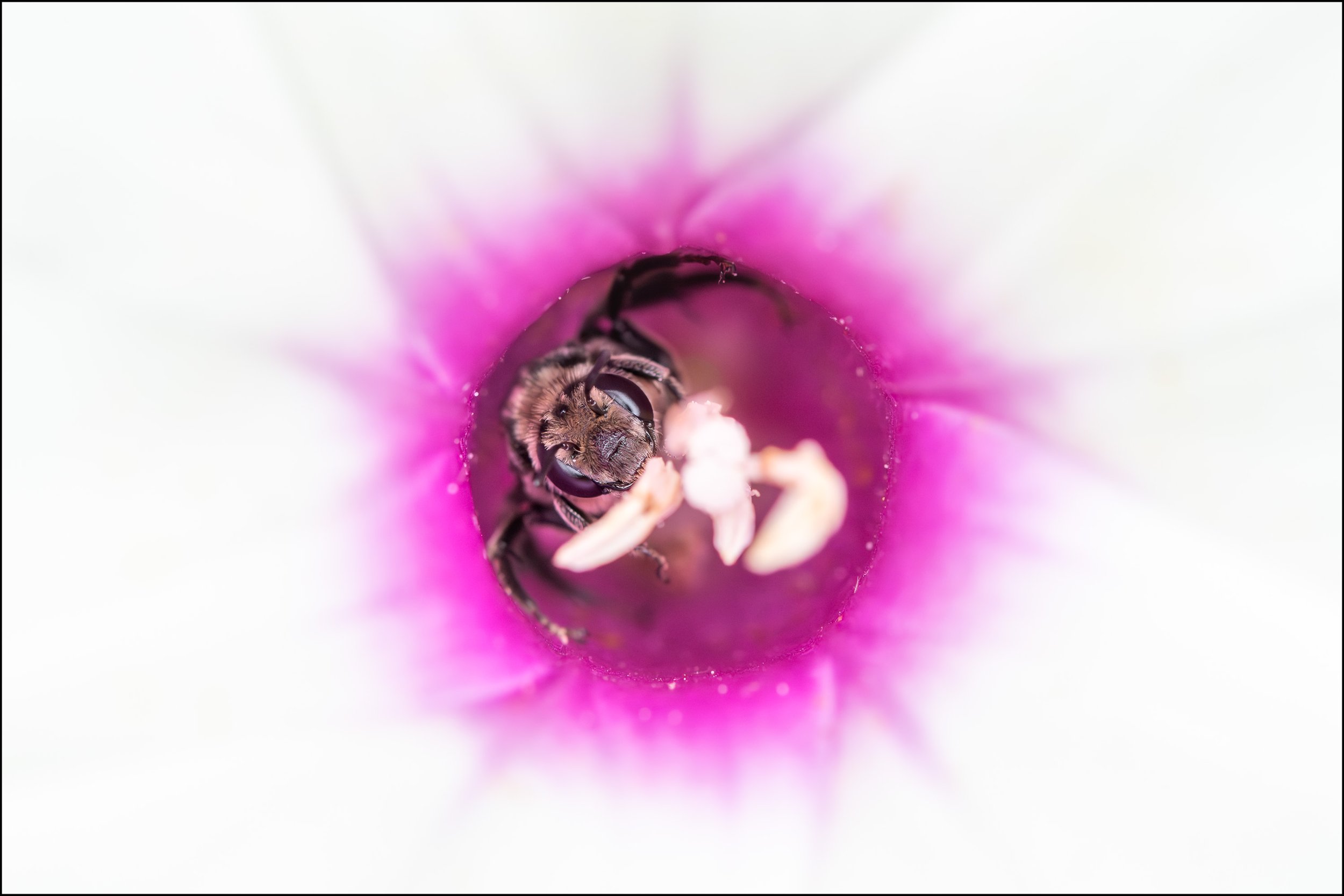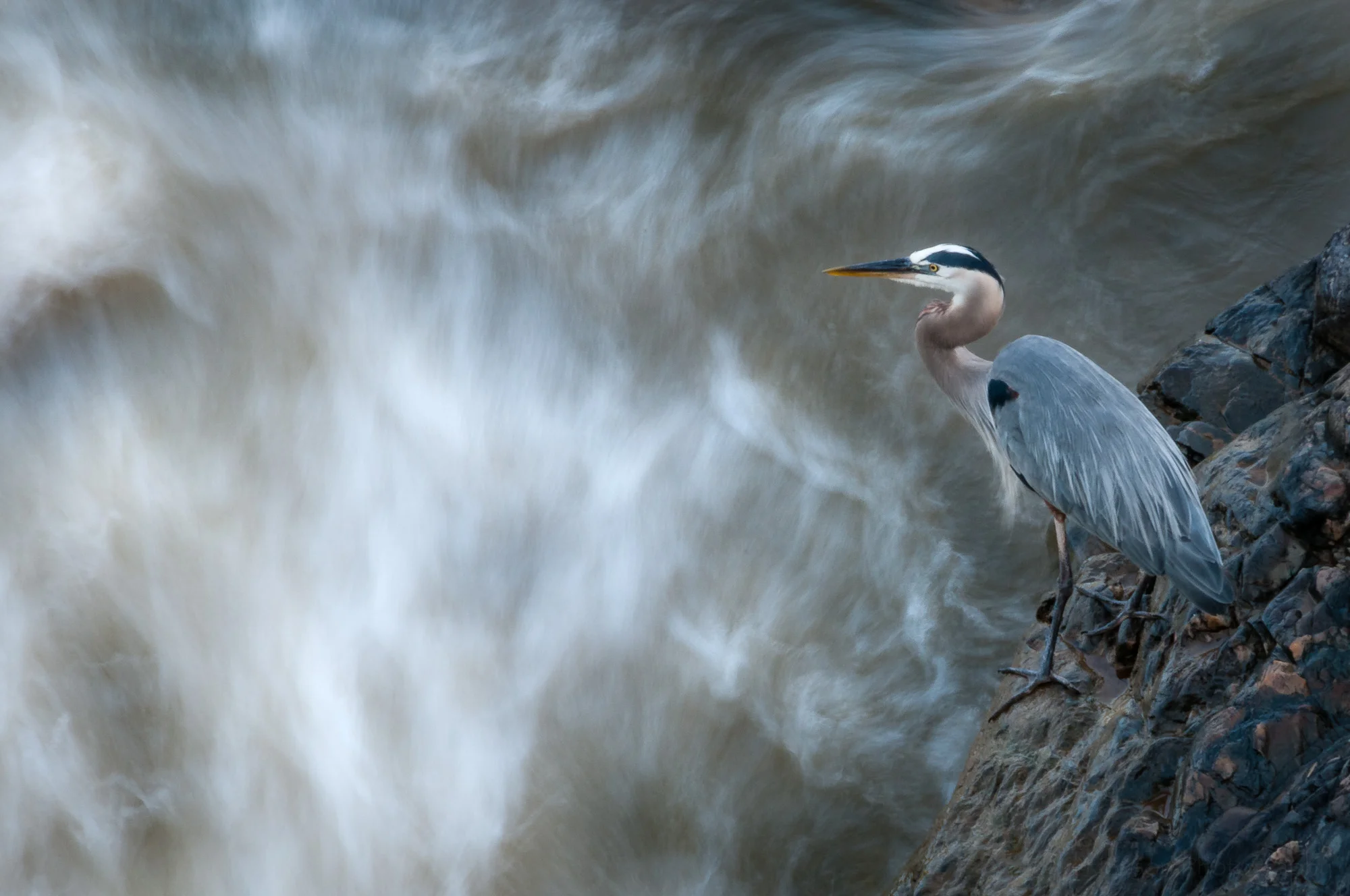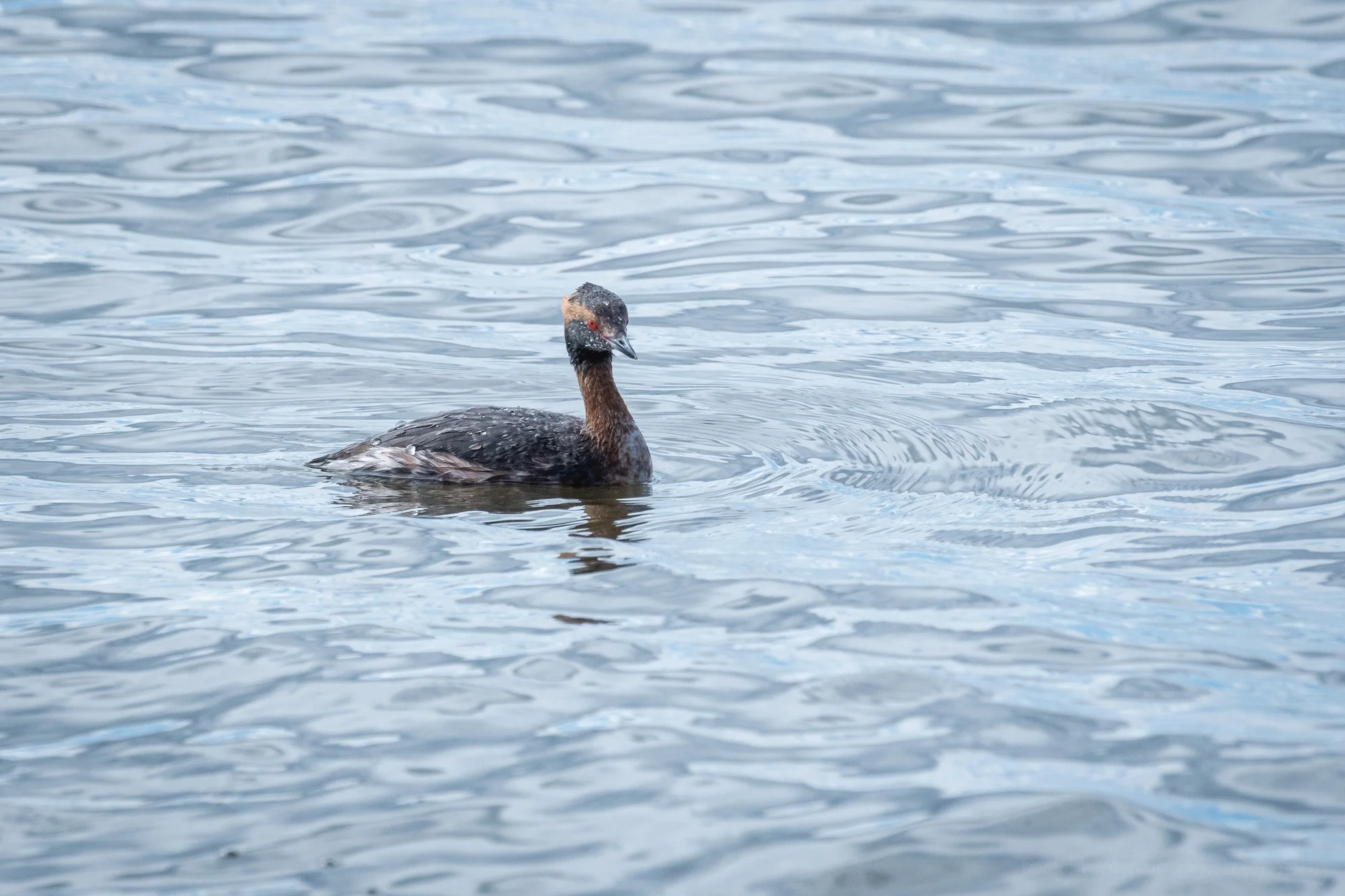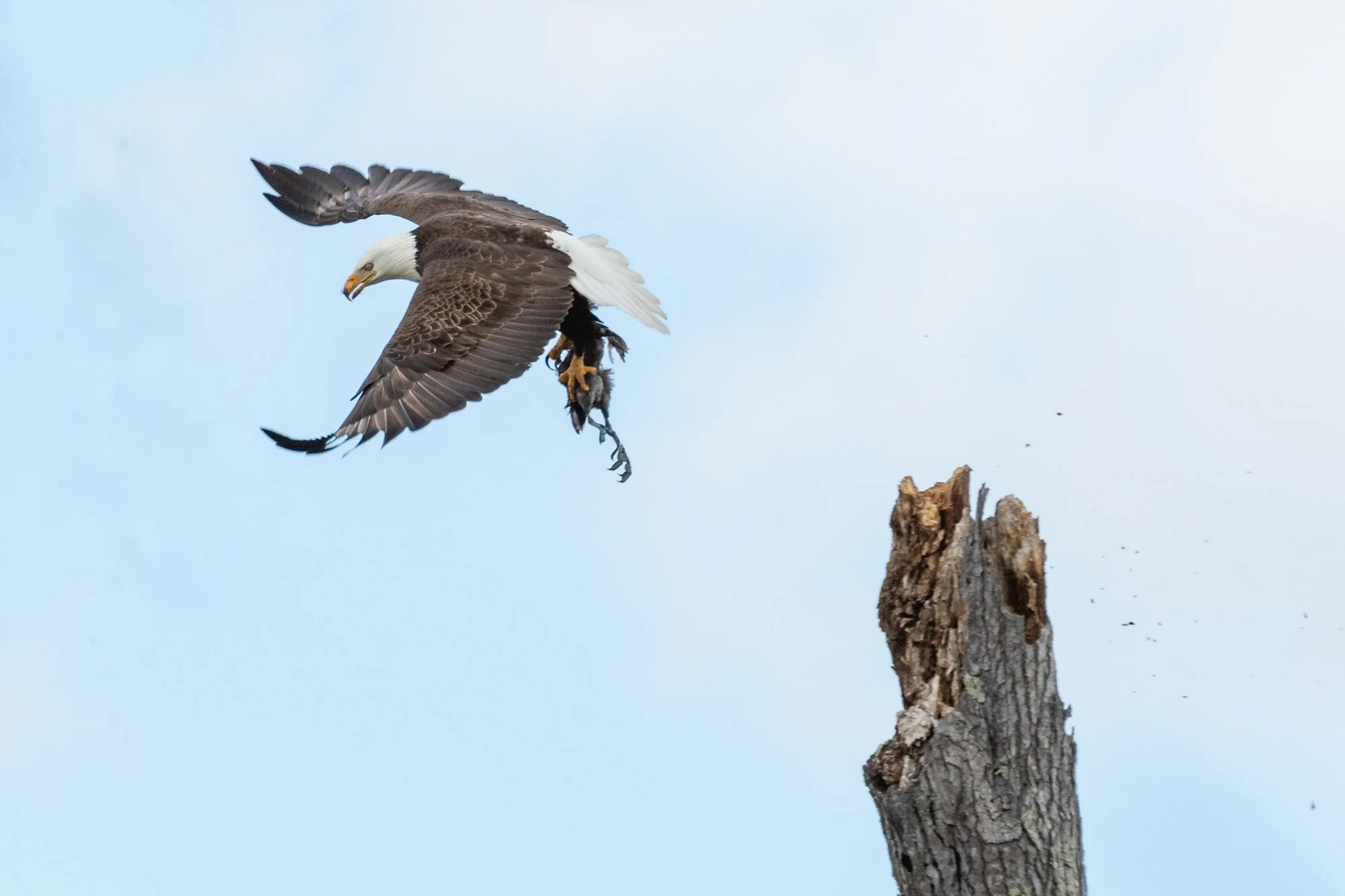A car drives past, heading towards Mary’s Rock Tunnel.
I’ve mentioned before how much I enjoy going on day trips with my folks. During some of these trips we end up driving portions of Skyline Drive over top the Blue Ridge Mountains in Shenandoah National Park, Virginia. This was one of those trips.
It was mid to late October. We’d hoped to see a little colorful foliage but it was still almost entirely green with only hints of what might be to come. But it was a beautiful day with nice cool temperatures, and though there were lots of visitors to the park it wasn’t anywhere near as crowded as it can get when the foliage begins to change.
As we approached Mary’s Rock Mountain I had an idea for some photographs, so we pulled over into the overlook just before Mary’s Rock Tunnel. From here I kneeled down behind some rocks between the road and the overlook and rested my camera on the rocks. I was using a 6.5mm fisheye lens to capture both the road to my left and as much of the view from the overlook as possible. I would have preferred if there were fewer cars parked at the overlook, but it was unlikely to clear up anytime soon, so I took what I could get.
My plan was to stop the aperture down as far as necessary to allow me to slow the shutter speed enough to blur the cars driving towards the tunnel. I didn’t want to blur them beyond recognition, though, so I had to experiment a little to get just the right amount of motion blur. There were plenty of cars driving by so it didn’t take too long to get it right. In the end I settled on an aperture that gave me 1/25 second shutter speed.
One concern I had was exposure. It was late afternoon and the overlook was in open shade. But the sky beyond the overlook was still brightly lit. So I had to balance getting enough exposure for the cars going by without blowing out the highlights in the sky. Thankfully, today’s cameras have a fair bit of dynamic range and I was able to balance the exposure on each side of the photo in post-processing.
In the end I was very pleased with the photographs. They had started as a spur of the moment idea, one I didn’t know if I’d be able to pull off. And even if they hadn’t worked, it was still a beautiful day out with my family. Can’t get much better than that.
Stopping down the aperture allows me to slow the shutter speed enough to blur the moving car.
Gear Talk
The resources below contain affiliate links and I will be compensated if you make a purchase after clicking on my links. This is at no extra cost to you.
The lens I used in these photographs was an Opteka 6.5mm f/3.5 Fisheye Lens. It’s a great inexpensive fisheye that lets you experiment with what fisheye lenses can do without going to the much greater expense of name brand lenses. I wasn’t sure what to expect, given the price, but ended up being very happy with the lens so far. The controls are not as smooth as you would expect from name brands such as Nikon or Canon, but for the price, it’s a sacrifice I’m willing to make.
Be aware, this Opteka fisheye is a manual lens, requiring you to manually focus and set the exposure. The aperture is set using an aperture ring on the lens, not using the camera’s controls. So be sure it is compatible with your camera before purchasing.
Do you enjoy these posts?
Sign up to receive periodic emails with updates and thoughts. Don’t worry, I won’t spam you. And please consider purchasing artwork or products from my online store, and using my affiliate links in the sidebar to the right when shopping online.
I appreciate your support!























































